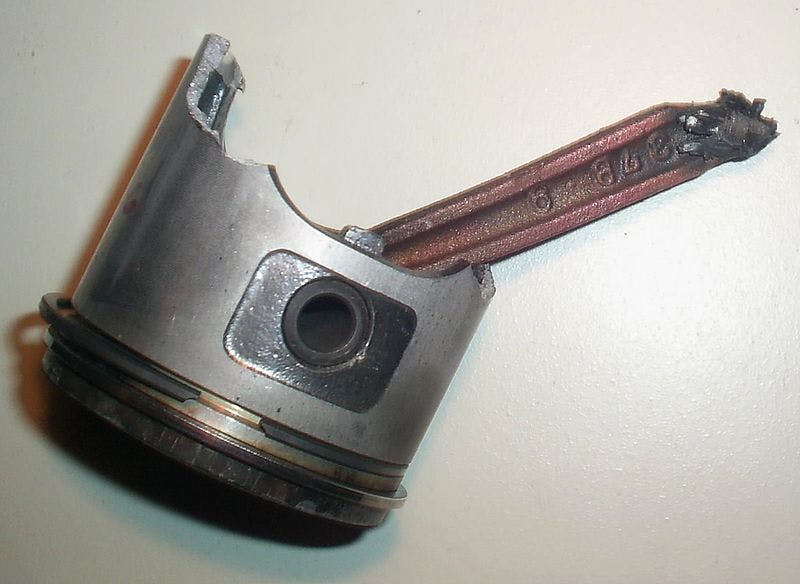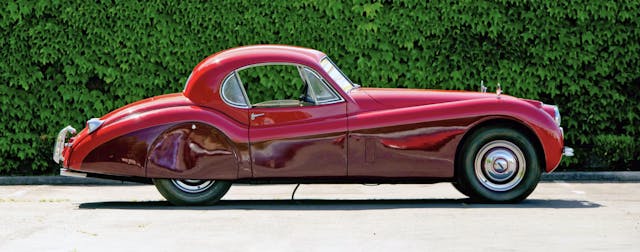Our Two Cents: The Weirdest Automotive Words
Words can be unnecessarily difficult in the English language, which does everything from borrowing words from other languages to organizing them in ways that makes no sense to non-native speakers. So for this installment of Our Two Cents, we asked the team here at Hagerty Media about automotive words we’ve encountered that are decidedly odd.
To be fair, we have only scratched the surface. There are oh-so-many words that fit the bill, and some of them are even crazier than the ones we came up with here. So have a look at what we think are weirdest words in the automotive lexicon, and sound off in the comments for ones you wish we brought up.
Kammback

“I’m gonna pick Kammback. That’s mostly because I love the design, but partially because I already wrote the definition for Vellum Venom:
“Kammback: a body design featuring a downward sloping roofline and rear deck that abruptly ends with a vertical panel (or near vertical). Proven to reduce aerodynamic drag by its namesake, Wunibald Kamm.” — Sajeev Mehta
Wrist Pin

“The wrist pin is definitely worthy of this list!” — Larry Webster
“Just for giggles, I googled to see if wrist pins are a thing for orthopedic surgery in a patient’s wrist. Who here thinks I got a relevant website from my search?” — Sajeev Mehta
Jubilee Clip

“Isn’t there something called a jubilee clip?” — Larry Webster
“I think the British call hose clamps ‘jubilee clips.’ That’s definitely a cooler name than hose clamp.” — Sajeev Mehta
Layrub Coupling

“And of course there are Laycock Layrub couplings: Only the Brits.” — Aaron Robinson
The, Absence of

“My vote is for the article the and the fact that the auto industry, particularly in Detroit, traditionally does not use an article as a modifier for car model names. For example, a Detroit marketing executive will say,
‘When we launched Malibu, we knew we would beat Camry.’
They do this instead of, ‘When we launched the Malibu, we knew we would beat the Camry.’ I’ve never understood it, I’ve always hated it. It’s like they want the car model to be considered an entity or something. So weird. You used to see it in print advertising copy. But there’s hardly any print advertising copy anymore, but that’s another story.” — Joe DeMatio
Spats

“Not only is ‘spat’ fun to say, because you spit the word out of your mouth, but it reveals an intersection between clothing and cars. Spats were originally a low-rise version of a gaiter (today, usually worn around your neck and/or mouth) for your ankle: a bit of cloth that you’d button over your shoe to keep dirt from getting inside it.
“In the automotive world, spats are removable panels that cover a car’s wheels … which do the same job that our feet (and shoes) do, although spats on a car don’t actually keep dirt from getting inside the tire; they’re mostly for aesthetic or aerodynamic value. Fun fact: Spat also refers to a cover over the upper part of a wheel on a plane.” — Grace Houghton
Splitter

“NACA duct, spoiler, valence—aero devices often have wonky names. The splitter is no different.
“To many a wing is a wing, no matter where you put it, but to the motorsports crowd wings have different monikers based on where they’re attached. Splitter, for example, is basically a wing on the nose that is flat to the pavement. The splitter diverts air to the nose of the car to create downforce. Downforce is good.
“Splitter, final answer. Oh, wait. Dzus fasteners! A ‘d’ followed by ‘z’, how cool is that?” — Cameron Neveu
Giubo

“I think the weirdest car word I’ve ever encountered is giubo, pronounced jew-boh. It’s a flexible coupling that allows rotational torque to be transmitted between a spinning shaft and the piece to which it is mated. Generally constructed of rubber, it corrects for misalignment in the system and dampens vibration. Commonly misspelled as ‘guibo,’ the term is a blend word derived from the Italian giunto, for ‘joint,’ and the engineer who patented it, Antonio Boschi, for use in the Alfa Romeo 1900. It is sometimes called a flex disc and is closely related to the rag joint.” — Stefan Lombard
“It is also known as a Rotoflex coupling, which is not as fun as my Laycock Layrub coupling suggestion.” — Aaron Robinson
***
Check out the Hagerty Media homepage so you don’t miss a single story, or better yet, bookmark it. To get our best stories delivered right to your inbox, subscribe to our newsletters.



It’s a real word, but when was the last time you discussed Homologation? Many of the cars of the 60’s we love wouldn’t be here if not for that word…
For Lex. A scantling is an old word for a 2 by 4 plank before it is milled. I’m not sure what it is on an engine.
I always thought petcock was bizarre for the radiator drain.
Canard, haven’t seen it on the list.
What is the purpose of a canard on a car?
A properly placed canard will allow vortices to form, which helps keep airflow attached to the vehicle. These vortices can help pull air out of the fender wells, which relieves pressure and sends airflow behind the tire. The result has air flowing down the car’s sides, reducing lift (or improving downforce).
Jesus clip
I would always be careful about using the Lord’s name in vain.
Never know when you will be needing his help on something important.
As someone from the southern US, I see no problem with “the” being put before words (ex: “I’m heading to the Walmart, do you need anything?”)
That’s true – I looked it up on the Google. 😉
We called Chevy automatics “slushers” back in the ‘60’s.
For English terms my favorite is TRUNNION. There are two different parts on a British car that are called trunnions and they are very different parts.
How about dashboard? Dash is road dirt kicked up by the horse(s) in horse drawn buggies and wagons. Hence, a board was placed across the front of the buggy to block the dash from reaching the occupants of the wagon.
The term, dashboard, was continued in early automobiles, such as the Curved-Dash Olds.
Idiot Lights.
Bespoke–Sometimes misused by car-article-writers and many times OVER-used by car-article-writers: “In the English language of yore, the verb ‘bespeak’ had various meanings, including “to speak,” “to accuse,” and “to complain.” In the 16th century, ‘bespeak’ acquired another meaning: “to order or arrange in advance.” It is from that sense that we get the adjective bespoke, referring to clothes and other things that are ordered before they are made. Bespoke has enjoyed a spike in usage in recent years, perhaps due to consumer trends that champion all things artisanal over those that are prefab.” Better would be simply to say “custom”. One that defies spelling is “duelie”, “dualie”, “doolie”, “etc.”–I once read an article by a Hagerty writer in which the word (used to describe a pick-up with two pairs of wheels on the rear axle) was actually spelled 3 ways in the article! LOL
I found that using DuckDuckGo to search wrist pin results in the internal combustion engine definition and links rather than the orthopedic one. 🙂